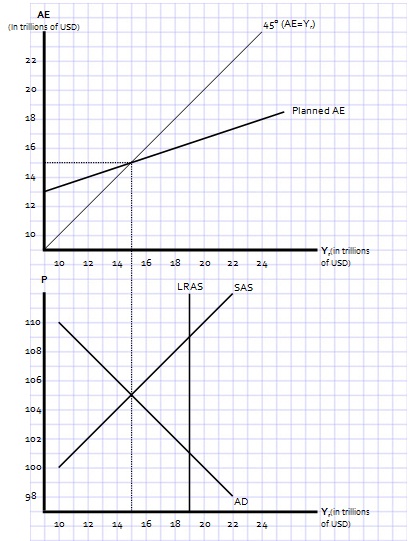Use the graph below to answer the questions.
Part I – what we’re looking at:
A) What is the economy’s potential GDP? What does this mean?
B) What is our short-run equilibrium (price level and GDP)?
C) Is this economy in a recessionary or expansionary gap?
D) How large is this gap?
Part II – something changes:
The government notices that there is an output gap and decides to increase government spending with a stimulus package of $4 trillion in hopes that it will spur growth and stop unemployment.
A) What is the new level of GDP (as determined by aggregate expenditure)?
B) Calculate the Keynesian Multiplier.
The price level now adjusts to get us to a new short-run equilibrium.
C) What is the new short-run equilibrium (price level and GDP)?
D) What is the new output gap?
E) Assume that the government is done spending (as is other autonomous expenditure items). What must change to get us to long-run equilibrium?
Part III – end results:
A) Did the government spend too much or too little? Explain.
B) Was there inflation or deflation? Calculate it for extra credit.
C) Was there economic growth? Explain.
